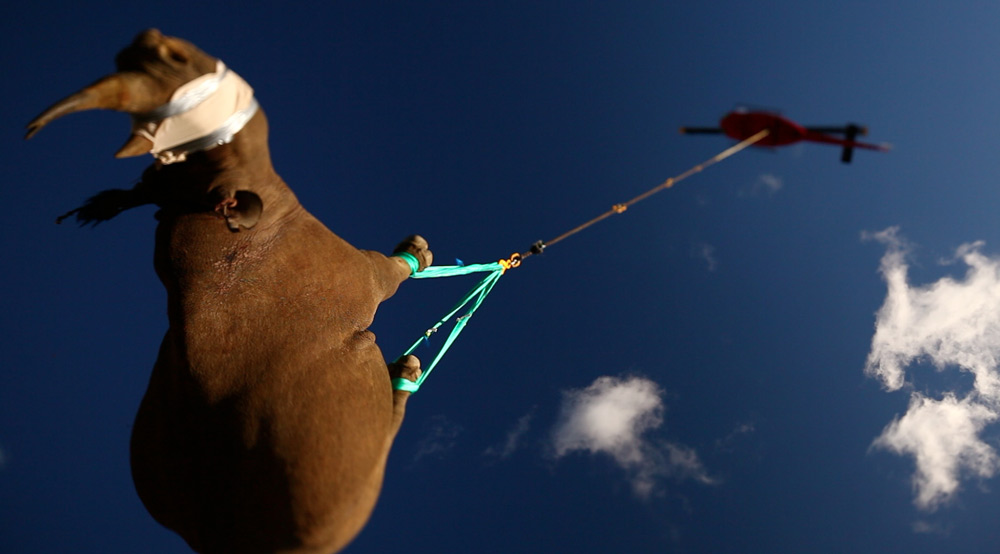Endangered Rhinos Airlifted to New Home

How do you move a sleeping rhino? With a helicopter and a whole lot of rope.
Nineteen black rhinoceroses recently took flight as part of an effort to establish new, safe habitats for the critically endangered animals. The 1.5-ton rhino species has been devastated by poaching; in the early 1990s, there were only 2,000 black rhinoceroses left in the wild, according to the World Wildlife Fund for Nature of South Africa. The rhinos are coveted for their horns, which are sold as aphrodisiacs on foreign markets.
WWF's Black Rhino Range Expansion project aims to protect the species by expanding their range. But rhinos aren't easy to transport. Prior translocation efforts have involved sedating rhinos with tranquilizer guns, and then either moving them in trucks or airlifting them in nets to waiting vehicles.
Now, a new — and visually striking — procedure dispenses with the nets in favor of suspending the sleeping rhinos by the ankles for a short flight to a ground-based transport. [Photos of flying rhinos]
"This new procedure is gentler on the darted rhino, because it shortens the time it has to be kept asleep with drugs, the respiration is not as compromised as it can be in a net, and it avoids the need for travel in a crate over terrible tracks," said Jacques Flamand, who directs the rhino project.
The flights only last about 10 minutes, Flamand said in a statement, and helicopter transport makes it easier to get the animals out of rough terrain.
The 19 rhinos were moved from the Eastern Cape of South Africa to the Limpopo province of northern South Africa. Since 2003, the WWF has relocated almost 120 of the animals, expanding the black rhino range by 25 percent. The project has established seven new black rhino populations. To keep poachers at bay, the rhinos relocate to lands guarded by security.
Sign up for the Live Science daily newsletter now
Get the world’s most fascinating discoveries delivered straight to your inbox.
"Translocating rhinos always involves risk, but we cannot keep all our eggs in one basket," Flamand said. "It is essential to manage black rhino populations for maximum growth as it is still a critically endangered species, and this is what the project does by creating large new populations, which we hope will breed quickly.”
You can follow LiveScience senior writer Stephanie Pappas on Twitter @sipappas. Follow LiveScience for the latest in science news and discoveries on Twitter @livescience and on Facebook.

Stephanie Pappas is a contributing writer for Live Science, covering topics ranging from geoscience to archaeology to the human brain and behavior. She was previously a senior writer for Live Science but is now a freelancer based in Denver, Colorado, and regularly contributes to Scientific American and The Monitor, the monthly magazine of the American Psychological Association. Stephanie received a bachelor's degree in psychology from the University of South Carolina and a graduate certificate in science communication from the University of California, Santa Cruz.









